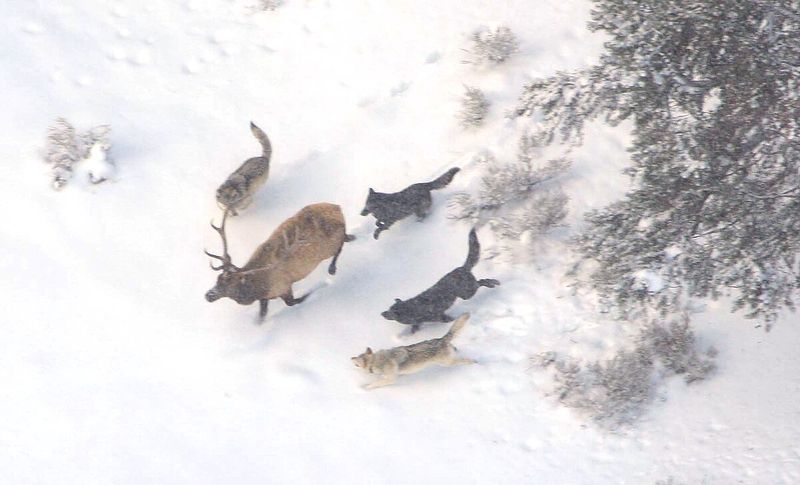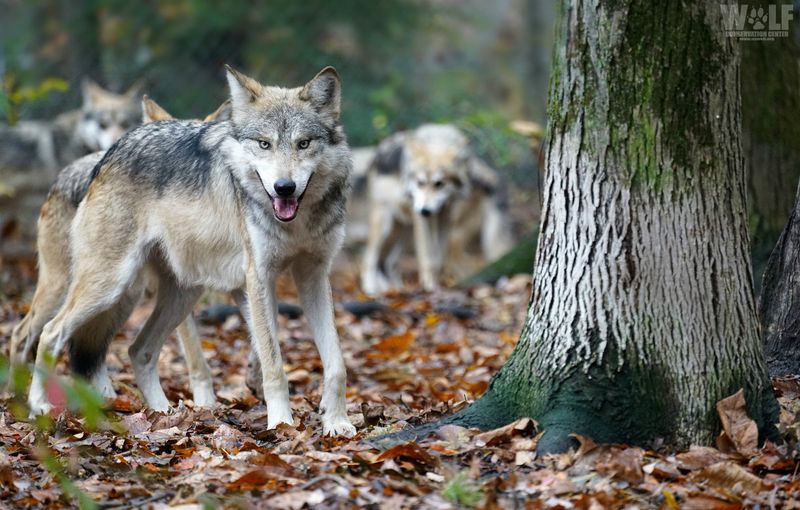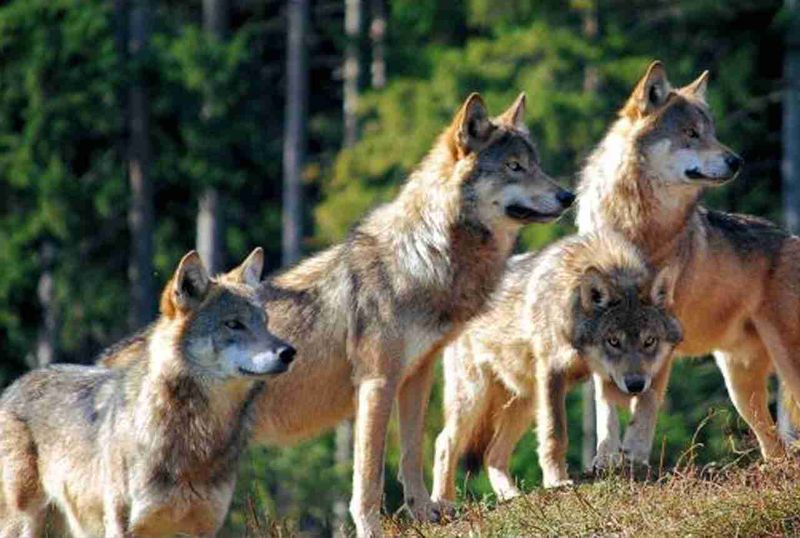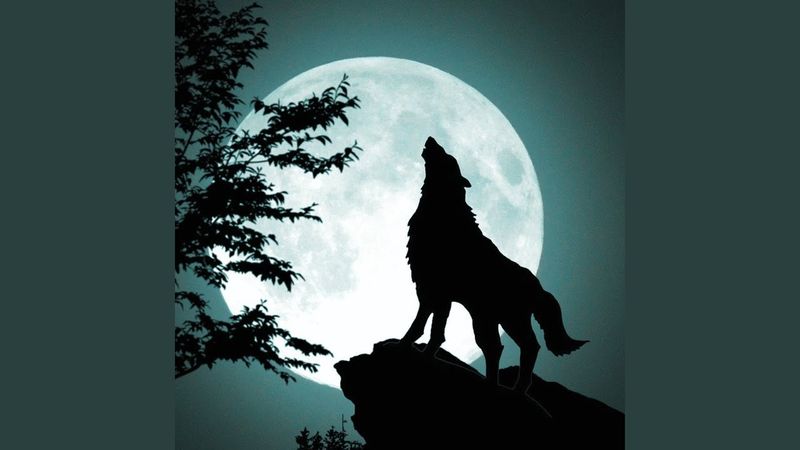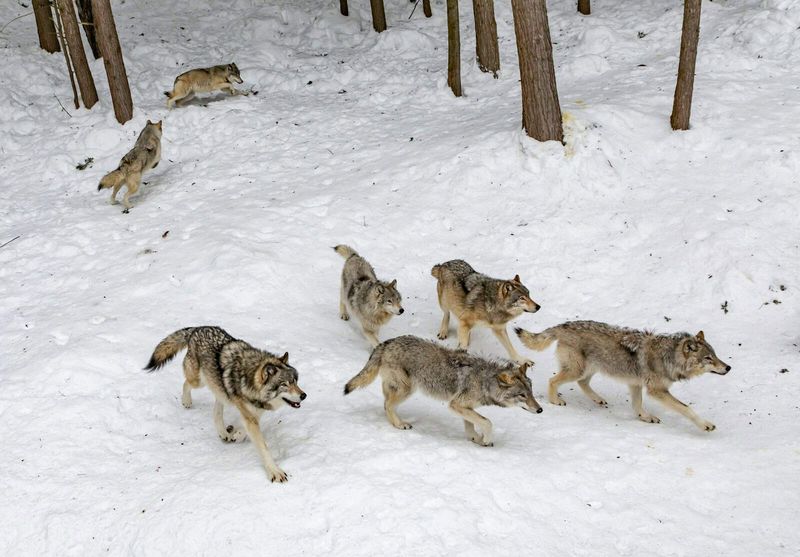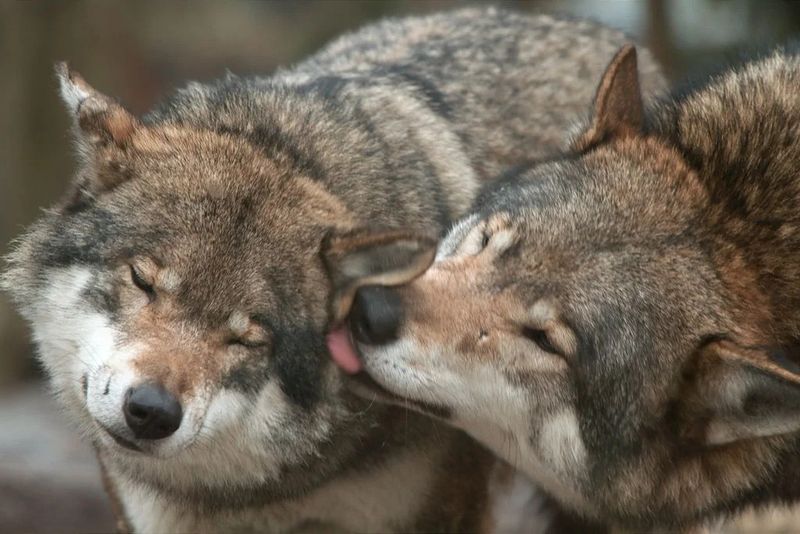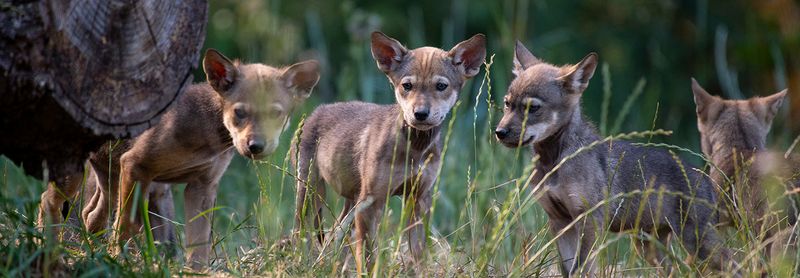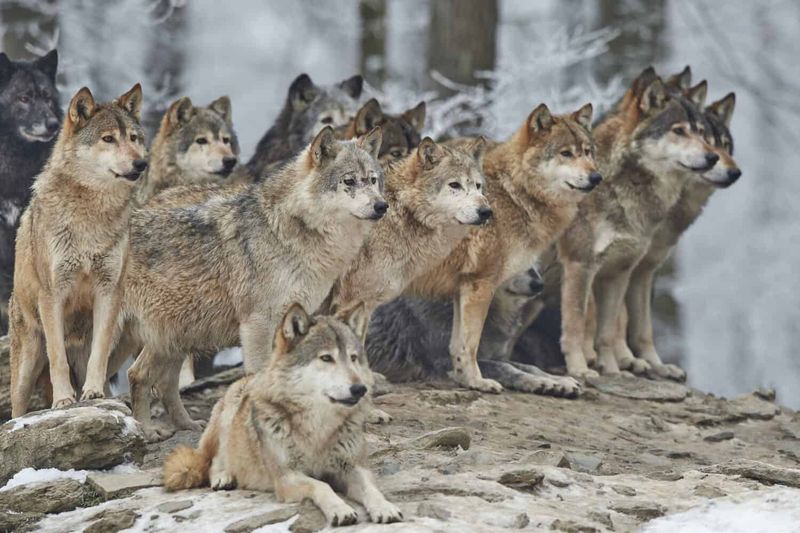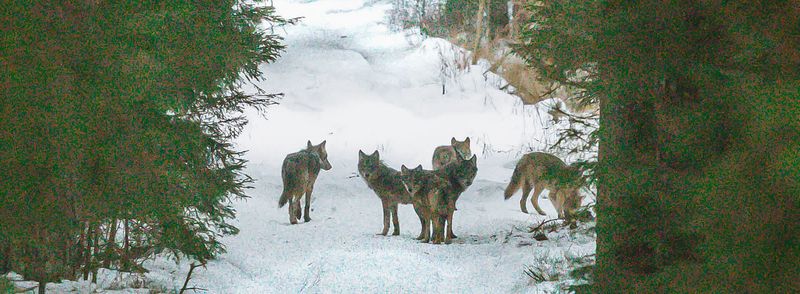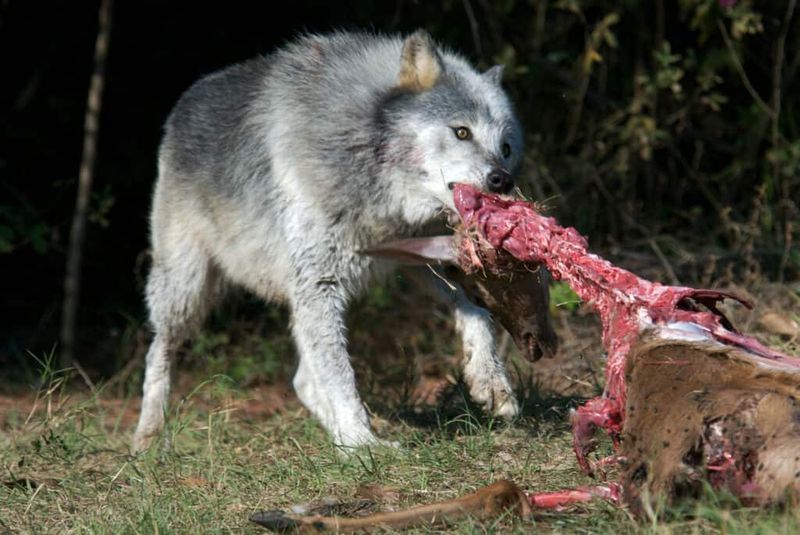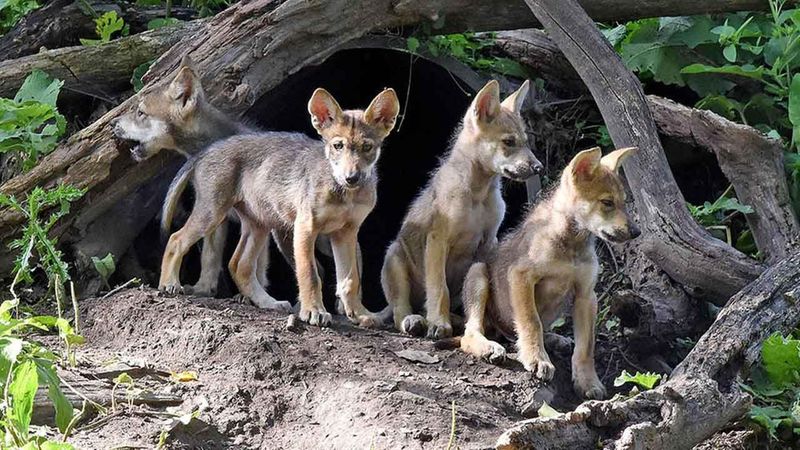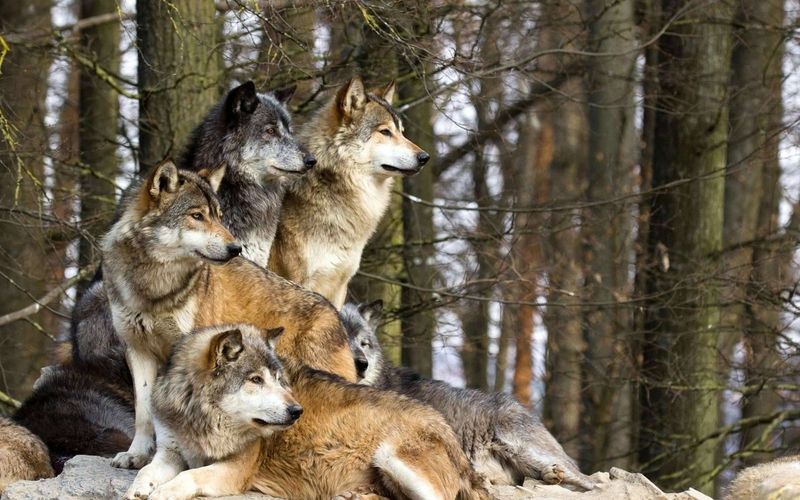While both wolves and domesticated dogs share a common ancestry, their behaviors have diverged significantly due to years of evolution and adaptation. Wolves, still wild and untamed, exhibit behaviors that are often absent in their domesticated cousins. In this blog post, we explore twelve unique behaviors that set wolves apart from domesticated dogs.
Hunting in Packs
In the wild, wolves are known for their impressive hunting skills, often working together in packs to take down prey. This pack mentality allows them to coordinate attacks with precision. Each wolf plays a specific role, whether it’s leading the chase or flanking the prey.
Domesticated dogs, on the other hand, have lost this instinct due to years of selective breeding and living alongside humans. While some dog breeds might still exhibit hunting instincts, they lack the structured pack cooperation seen in wolves. This difference highlights the distinct evolutionary paths of the two species.
Establishing Territory
Wolves are territorial animals, and they mark their domain with precision. Scent marking is common, and they patrol the borders to ensure their territory remains secure. This behavior helps maintain pack unity and protect resources.
Domesticated dogs, while territorial in some respects, do not exhibit the same level of dedication to territory defense. They rely more on their human companions for protection. Wolves’ territorial behavior underscores their need for survival in the wild, a trait that has lessened in domesticated breeds.
Complex Social Hierarchies
Wolves live in complex social structures, with each member of the pack having a defined rank. The alpha pair leads the pack, making critical decisions, while subordinates have specific roles. This hierarchy ensures order and efficiency within the pack.
Domesticated dogs, even when living with multiple dogs, do not naturally form such intricate hierarchies. Their social structure is more fluid, influenced by their human family. This difference showcases the adaptability of dogs to coexist with humans, while wolves remain firmly rooted in their wild lineage.
Howling Communication
Howling is a quintessential wolf behavior that serves as a means of long-distance communication. Wolves use howls to convey messages, establish territory, and strengthen social bonds within the pack. It’s a haunting sound that echoes through forests.
Domesticated dogs bark instead of howl, using their voices to communicate with humans and other animals in a more direct way. While some dogs may howl, it lacks the same depth of purpose and coordination found in wolf packs. This communication method remains a powerful symbol of the wild.
Seasonal Migration
In response to changing seasons, wolves often migrate to find food and better living conditions. This nomadic lifestyle allows them to follow prey and avoid harsh weather conditions. Migration is a survival strategy deeply ingrained in wolf behavior.
Domesticated dogs, provided with consistent resources by humans, lack this migratory instinct. They are accustomed to stable environments and do not need to travel long distances for survival. This fundamental difference highlights the adaptive strategies that wolves employ in their natural habitat.
Pack Bonding Rituals
Wolves engage in various bonding rituals to strengthen social ties within their pack. Activities like mutual grooming and playful interactions help maintain harmony and reinforce bonds. These rituals are crucial for pack stability.
Domesticated dogs display social behaviors, but their interactions are often directed towards humans rather than other dogs. The depth of wolf pack rituals highlights the sophisticated social dynamics that domesticated dogs have largely lost. This difference in social engagement reflects their divergent evolutionary paths.
Raising Pups Collectively
In wolf packs, raising pups is a collective effort. All members play a role in caring for the young, from feeding to protection. This communal approach ensures the survival and well-being of the next generation.
Domesticated dogs, while sometimes living in groups, do not exhibit the same collective parenting behaviors. They often rely on human intervention for puppy care. The cooperative nature of wolf pack parenting underscores the importance of community in the wild, setting them apart from their domesticated relatives.
Coordinated Pack Hunts
Wolves are adept hunters, using coordinated strategies to catch prey. Each member of the pack has a role, creating a seamless and effective hunting team. This teamwork is vital for capturing large and elusive prey.
Domesticated dogs lack this level of hunting coordination, having been bred away from such instincts. Although some breeds retain hunting skills, they do not match the precision of wolf pack hunts. This difference illustrates how wolves have maintained their natural hunting prowess, while dogs have adapted to human companionship.
Avoiding Human Interaction
Wolves are naturally wary of humans and tend to avoid interaction whenever possible. This cautious behavior is a survival mechanism, as humans have historically posed dangers to wolves. They prefer remote wilderness areas, far from human settlements.
Domesticated dogs, conversely, have been bred to live alongside humans and seek interaction with them. This fundamental difference in human interaction highlights the divergent paths wolves and dogs have taken over centuries of evolution and domestication.
Wild Diet Preferences
Wolves are carnivorous predators, with a diet consisting mainly of large ungulates like deer and elk. They also scavenge for smaller animals and carrion when available. Their diet is diverse and adapted to the wild environment.
Domesticated dogs have a more varied diet, often relying on human-provided food. Their dietary needs have evolved to include grains and vegetables, unlike their wild counterparts. This dietary distinction highlights the adaptability of domesticated dogs to human lifestyles, whereas wolves remain true to their carnivorous roots.
Denning Behavior
Wolves create dens in secluded areas to give birth and raise their young. These dens are carefully selected to provide safety and shelter. Denning is a critical part of wolf life, ensuring the next generation’s safety.
Domesticated dogs do not exhibit this denning behavior, having been removed from the need to find such secure locations. Instead, they rely on human homes for shelter. This instinctual behavior in wolves underscores their wild nature and the protective measures they take for their offspring.
Instinctual Pack Leadership
Alpha wolves naturally lead their packs, providing direction and making critical decisions. This leadership ensures the pack’s success in hunting and survival. The alpha’s role is earned through strength, intelligence, and social bonds.
Domesticated dogs do not have this instinctual leadership dynamic. Their social structure is influenced by humans, who assume the leadership role. This difference highlights wolves’ natural leadership instincts, which remain fundamental to their survival, unlike their domesticated relatives.

